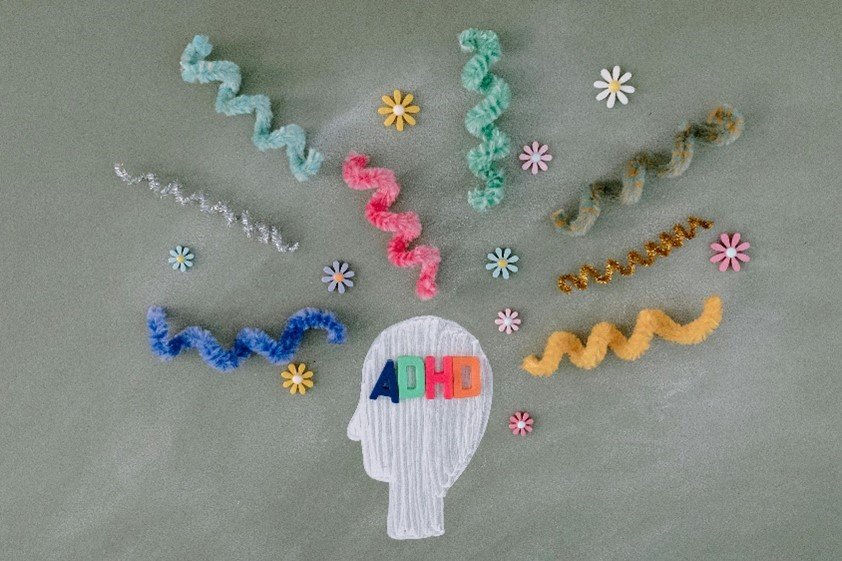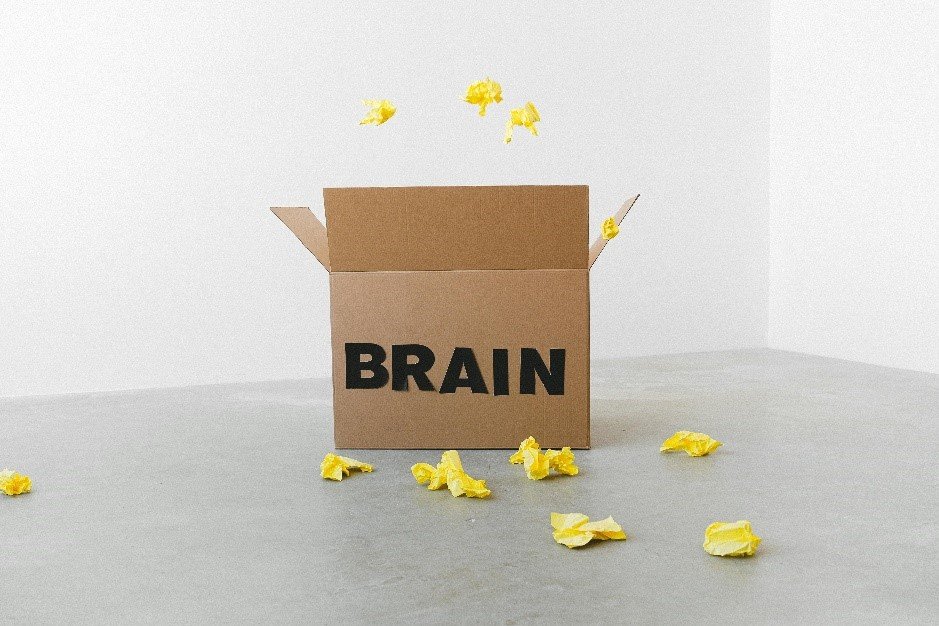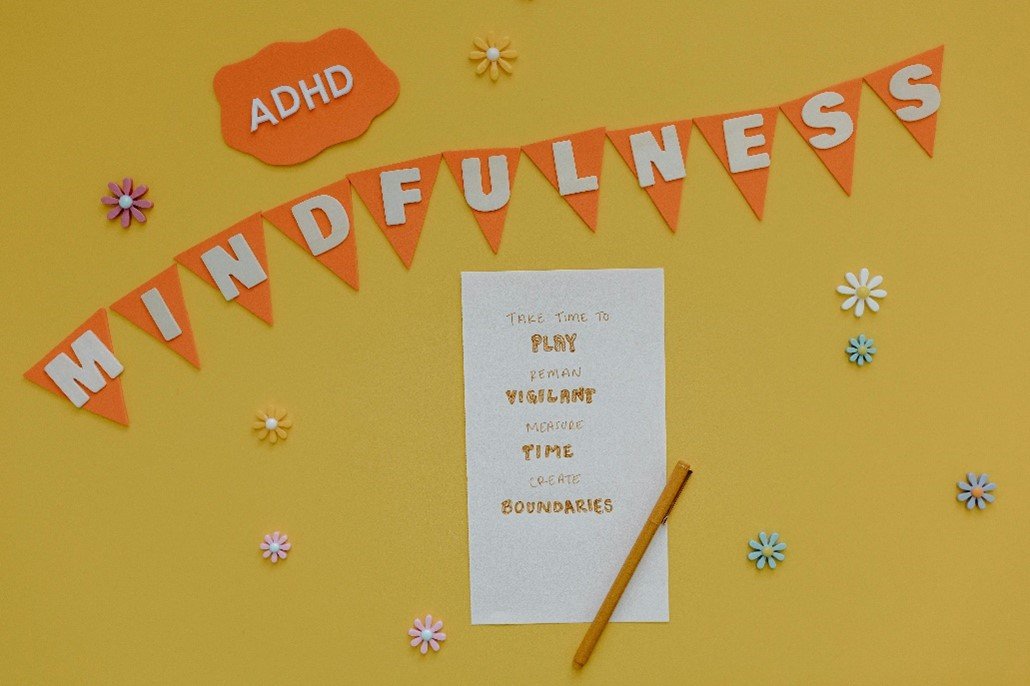What is ADHD Brain Training? 5 Science-Backed Methods That Actually Work
Actually, let me start with something I wish someone had told me years ago when I first started coaching adults with ADHD…
Three years ago, I sat across from Sarah (not her real name), a brilliant marketing executive who couldn’t understand why she kept missing deadlines despite working 12-hour days. She’d tried every productivity app, read countless self-help books, and even attempted to “discipline” herself into focus. Nothing worked. Sound familiar?
That’s when I realized something crucial about ADHD brain training: it’s not about fixing something broken. It’s about building the right strategies to support how your brain already works.
If you’re reading this, you’re probably wondering what ADHD brain training actually is and whether it can help you or someone you love. As an ADHD coach who’s worked with hundreds of adults over the past decade, I can tell you this: the science is promising, the methods are practical, and the results can be life-changing when you find the right approach.

What Exactly Is ADHD Brain Training?
ADHD brain training refers to evidence-based interventions designed to strengthen cognitive functions that are often challenging for people with ADHD. Learn more about brain training options for ADHD from CHADD’s comprehensive fact sheet. These include working memory, attention control, executive function, and emotional regulation.
But here’s what makes it different from generic “brain games” (and why I get frustrated when people confuse the two): real ADHD brain training is grounded in neuroscience research and tailored specifically to how ADHD brains work. It’s not about making your brain “normal” – it’s about helping your unique brain perform at its best.
The key lies in understanding neuroplasticity, which I’ll explain more later. For now, just know that your brain can literally rewire itself to work more effectively, regardless of your age.
Why Traditional Approaches Often Fall Short for ADHD Brains
Before we dive into what works, let me explain why so many people with ADHD feel like they’ve “tried everything” without success.
Most traditional productivity and focus strategies assume a neurotypical brain. They’re built on the idea that you can simply will yourself to pay attention or that the right planner will solve your time management issues. (Trust me, I’ve seen clients with dozens of abandoned planners!)
ADHD brains work differently. They need:
- External structure rather than relying solely on internal motivation
- Immediate feedback rather than delayed rewards
- Multiple sensory inputs rather than single-channel information
- Strength-based approaches rather than deficit-focused “fixes”
This is why ADHD brain training focuses on building systems that work with your brain, not against it.
5 Science-Backed ADHD Brain Training Methods That Actually Work
Here are the five most effective approaches I’ve seen in my practice, backed by research and real client success stories:

1. ADHD Coaching: Strength-Based Accountability That Changes Everything
Instead of trying to “push through” chaos, ADHD coaching helps you build systems around your strengths. A coach supports you with tools to break tasks into smaller steps, create realistic routines, and follow through – without judgment.
At Heal-Thrive, we’ve seen adult clients who struggled for years with procrastination suddenly take charge of their goals. Learn more about our ADHD coaching approach. Why? Because they finally had someone in their corner, someone who understood ADHD management strategies, not just generic to-do lists.
How it works in practice:
- Weekly accountability sessions that focus on progress, not perfection
- Personalized systems based on your specific ADHD presentation
- Real-time problem-solving when strategies aren’t working
- Celebration of wins (however small they might seem to others)
Take Marcus, a software developer who came to me after getting written up for missing project deadlines. Within three months of coaching, he’d not only caught up on his backlog but received a promotion. The difference? We created a visual project tracking system that worked with his need for immediate feedback, not against it.
The science behind it: Research shows that ADHD coaching significantly improves executive functioning, time management, and quality of life measures. A 2010 study in the Journal of Attention Disorders found that adults who received ADHD coaching showed greater improvement in ADHD symptoms and executive functioning compared to those who didn’t receive coaching.
2. Cognitive Remediation Therapy (CRT): Rewiring Your Brain with Purpose
CRT uses guided mental exercises to improve working memory, processing speed, and task initiation. It’s been shown to improve the brain’s ability to manage distractions and complete tasks. For practical strategies, see ADDitude’s guide on how to improve working memory.
In fact, studies (like Zuberer et al., 2015) suggest that consistent cognitive training improves inhibitory control, helping the brain learn to slow down impulsive responses over time.
What CRT looks like:
- Computerized exercises that gradually increase in difficulty
- Working memory tasks that strengthen your ability to hold information
- Attention training exercises that improve focus duration
- Processing speed activities that help you think more quickly and accurately
I remember working with Jennifer, a college student who couldn’t take notes fast enough during lectures. After 12 weeks of CRT focusing on processing speed and working memory, she went from barely keeping up to being able to participate actively in class discussions while still capturing key points.
The research backing: A 2018 meta-analysis found that cognitive training programs specifically designed for ADHD showed moderate to large effect sizes for improving working memory and attention. The key is consistency – most effective programs involve 3-5 sessions per week for 8-12 weeks.
3. Executive Function Training: Building Real-Life Skills That Stick
Instead of waiting for motivation to strike, executive function training teaches practical skills like time management, task prioritization, and self-monitoring. These skills don’t just help in school or work; they boost confidence in relationships and daily life.
As one client shared, “Once I learned how to plan my week and create visual reminders, I actually felt in control for the first time in years.”
Core executive function skills we target:
- Task initiation: How to start tasks without endless procrastination
- Planning and prioritization: Breaking big projects into manageable steps
- Time management: Realistic time estimation and schedule creation
- Self-monitoring: Recognizing when you’re off-track and adjusting
- Cognitive flexibility: Adapting when plans change (because they always do)
Real-world application example:
David, a small business owner, was drowning in administrative tasks. We implemented a system where he:
- Time-blocked his calendar with specific task categories
- Used a visual dashboard to track project progress
- Set up automatic reminders for routine tasks
- Created “transition rituals” between different types of work
Within two months, he’d reduced his work hours by 15% while increasing his revenue by 30%. (And yes, he was skeptical at first too!)
The neuroscience: Executive function training literally strengthens the prefrontal cortex – the brain’s “CEO” that manages planning, decision-making, and impulse control. Neuroimaging studies show increased activity in these regions after consistent executive function training. CHADD provides detailed information about executive function skills and their importance in ADHD.
4. Mindfulness & Meditation: Focus Training from the Inside Out
Mindfulness meditation for ADHD helps quiet the noise in your mind by training attention in the present moment. ADDitude Magazine offers extensive guidance on meditation for ADHD and mindfulness training. It improves emotional regulation, reduces impulsivity, and increases self-awareness.
Even just 5-10 minutes of breathing or guided meditation a day can reduce stress and re-center the mind – tools you can carry anywhere.

Why mindfulness works for ADHD brains:
- It strengthens the “attention muscle” through repeated practice
- It creates space between impulse and action
- It reduces the emotional reactivity that often accompanies ADHD
- It improves self-awareness of attention patterns
Practical mindfulness techniques I teach:
- Body scan meditation: Helps with hyperactivity and restlessness
- Breathing exercises: Immediate tools for overwhelm and anxiety
- Mindful movement: Walking meditation for those who can’t sit still
- Loving-kindness practice: Counters the self-criticism common in ADHD
Lisa, a teacher with ADHD, started with just 3 minutes of morning breathing exercises. She was skeptical (like many of my clients), but after a month, she noticed she wasn’t snapping at her students when they were disruptive. Six months later, she described feeling like she had a “pause button” for the first time in her life.
The research: A 2017 systematic review found that mindfulness-based interventions significantly reduced ADHD symptoms in both children and adults. Brain imaging studies show that regular meditation actually increases gray matter density in areas associated with attention and emotional regulation.
5. Brain Training Technology: Apps, Games, and Neurofeedback
From apps that improve working memory in ADHD to neurofeedback sessions that train the brain to regulate itself, tech-based tools are expanding how we help ADHD brains grow.
For example, neurofeedback ADHD protocols (Baumeister et al., 2018) show how repeated feedback on brainwaves can actually change how the brain organizes attention. CHADD provides detailed information about neurofeedback treatment for ADHD.
Types of technology-based training:
- Working memory apps: Cogmed, Jungle Memory, and similar programs
- Attention training games: Programs that gradually increase focus demands
- Neurofeedback: Real-time brainwave monitoring and training
- Virtual reality training: Immersive environments for attention practice
Important note: Not all “brain training” apps are created equal. I always recommend looking for programs with peer-reviewed research backing their claims. (Unfortunately, many popular apps have little to no scientific support.)
Neurofeedback success story:
Tom, an accountant who struggled with sustained attention during tax season, completed 40 neurofeedback sessions over four months. By the end, he could work for 2-3 hour stretches without the mental fatigue that used to hit him after 30 minutes. His wife noticed he was less irritable at home, too.
The technology research: While some brain training apps show limited transfer to real-world tasks, neurofeedback has stronger research support. A 2019 meta-analysis found that neurofeedback training produced significant improvements in ADHD symptoms that persisted at follow-up.
The Science Behind It All: Neuroplasticity and the ADHD Brain
One of the most exciting developments in neuroscience is the concept of neuroplasticity – the brain’s incredible ability to change, adapt, and rewire itself throughout life. For people with ADHD, this means that their brain isn’t stuck with “deficits” forever.
Instead, with the right strategies, the brain can develop stronger connections that improve focus, impulse control, and emotional regulation.
Research like Baumeister et al. (2018) and Zuberer et al. (2015) demonstrate how neurofeedback and cognitive remediation therapies harness neuroplasticity by training the brain to regulate attention and inhibitory control more effectively. This isn’t magic; it’s the brain learning new patterns through repeated practice.
How neuroplasticity works in ADHD brain training:
- Repetition strengthens neural pathways: Like building muscle through exercise
- Challenge promotes growth: Gradually increasing difficulty builds capacity
- Multimodal training: Engaging multiple brain systems simultaneously
- Consistency matters: Regular practice creates lasting changes
This is why ADHD brain training isn’t about “fixing” ADHD. It’s about using evidence-based methods like ADHD coaching, executive function training, and mindfulness meditation to support and strengthen the brain’s natural ability to grow and adapt.
Common Challenges and How to Overcome Them
Let me be honest with you – ADHD brain training isn’t always smooth sailing. Here are the most common obstacles I see and how to work through them:
Challenge 1: “I’ve Tried Everything Before”
The reality: You probably tried methods designed for neurotypical brains, not ADHD-specific approaches.
The solution: Start with one ADHD-specific method and give it at least 6-8 weeks of consistent practice.
Challenge 2: Inconsistency with Practice
The reality: ADHD brains struggle with routine maintenance.
The solution: Build training into existing habits, use external accountability, and start smaller than you think you need to.
Challenge 3: Not Seeing Immediate Results
The reality: Brain changes take time – usually 6-12 weeks for noticeable improvements.
The solution: Track small wins daily, focus on process over outcomes, and celebrate incremental progress.
Challenge 4: Information Overwhelm
The reality: Too many options can lead to paralysis.
The solution: Pick ONE method to start with. You can always add others later.
How to Measure Progress: What Success Actually Looks Like
Success in ADHD brain training isn’t always dramatic. Here’s what to look for:
Week 1-2: Increased awareness of your attention patterns
Week 3-4: Slightly longer periods of sustained focus
Week 5-8: Improved emotional regulation and less reactivity
Week 9-12: Better task initiation and follow-through
Month 4-6: Sustained improvements that others notice
Specific metrics to track:
- Time spent on tasks before getting distracted
- Number of tasks completed per day
- Emotional reactions to setbacks (intensity and duration)
- Sleep quality and consistency
- Relationship satisfaction scores
Remember: progress isn’t linear. You’ll have good days and challenging days. The goal is an overall upward trend over time.
Real-Life Hope: Client Success Stories
Let me share a few more success stories that illustrate what’s possible:
Sarah (the marketing executive from my intro): After six months combining ADHD coaching with executive function training, she not only met her deadlines but was promoted to senior director. Her secret? A personalized project management system that worked with her visual processing strengths.
A client in California, struggling with impulsivity and poor working memory, shared after months of combined coaching and neurofeedback: “I finally feel like my brain is learning to calm down, focus, and think before I act. It’s like I’m rewiring myself from the inside.”
Michael, a graduate student: Couldn’t finish his thesis after three years of trying. Through cognitive remediation therapy and mindfulness training, he completed it in eight months. He now has his PhD and works as a researcher.
These aren’t miracle cures – they’re the result of consistent, targeted brain training that honors how ADHD brains actually work.
Getting Started: Your Next Steps
If you’re ready to explore ADHD brain training, here’s how to begin:
- Choose one method that resonates with you (don’t try to do everything at once)
- Commit to 6-8 weeks of consistent practice
- Track your progress with specific, measurable goals
- Get professional support when possible – it makes a huge difference
- Be patient with yourself – brain change takes time
Which method should you start with?
- If you need accountability and personalized strategies: ADHD Coaching
- If you want to strengthen core cognitive skills: Cognitive Remediation Therapy
- If you struggle with daily life management: Executive Function Training
- If you’re dealing with emotional reactivity: Mindfulness & Meditation
- If you’re interested in technology solutions: Neurofeedback or brain training apps
Conclusion: Empower Your ADHD Brain Today
To sum up, ADHD brain training is not a quick fix or a magic cure. It is a commitment to harnessing the brain’s neuroplasticity through scientifically supported methods like ADHD coaching, executive function training, cognitive remediation, and therapies such as CBT and DBT skills.
By addressing challenges like attention deficits, impulsivity, working memory weaknesses, and emotional regulation, these strategies empower individuals with ADHD to build sustainable habits, improve focus, and take control of their daily lives.
If you or someone you know struggles with ADHD, remember: the brain can learn and grow. You don’t have to face these challenges alone. Your ADHD brain isn’t broken – it just needs the right training to thrive.
Ready to get started? If you’re in California or nearby areas in the United States, our experienced ADHD coaches at Heal-Thrive.com are ready to support you. Whether you prefer virtual sessions or in-person meetings (available in the greater California region), we tailor each program to your unique needs.
Don’t wait for motivation to strike – it rarely does with ADHD brains. Take action today and discover what your brain is truly capable of when given the right support and strategies.
Contact us today to book your session and get personalized coaching that truly works. Your future self will thank you for taking this step.
